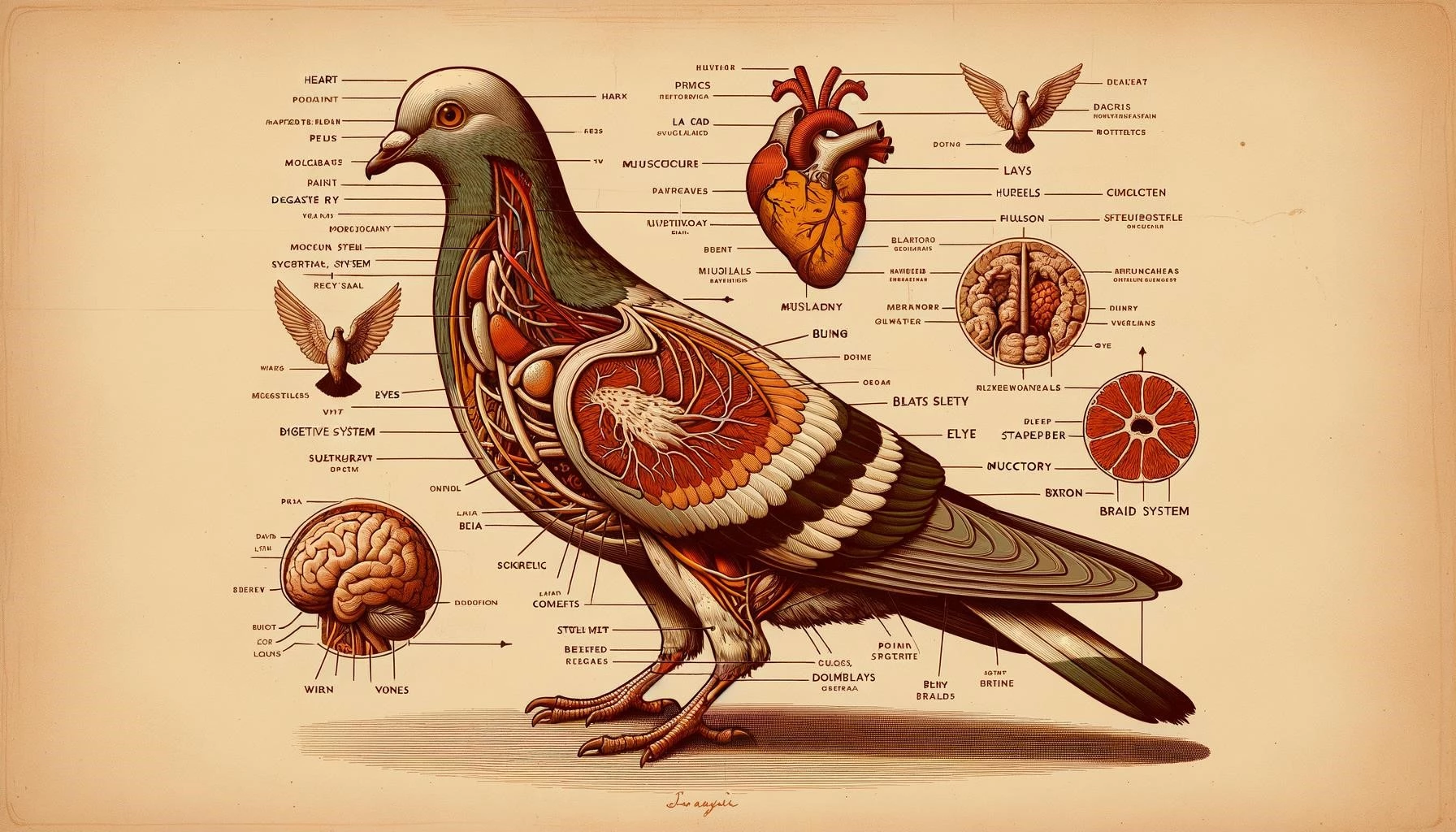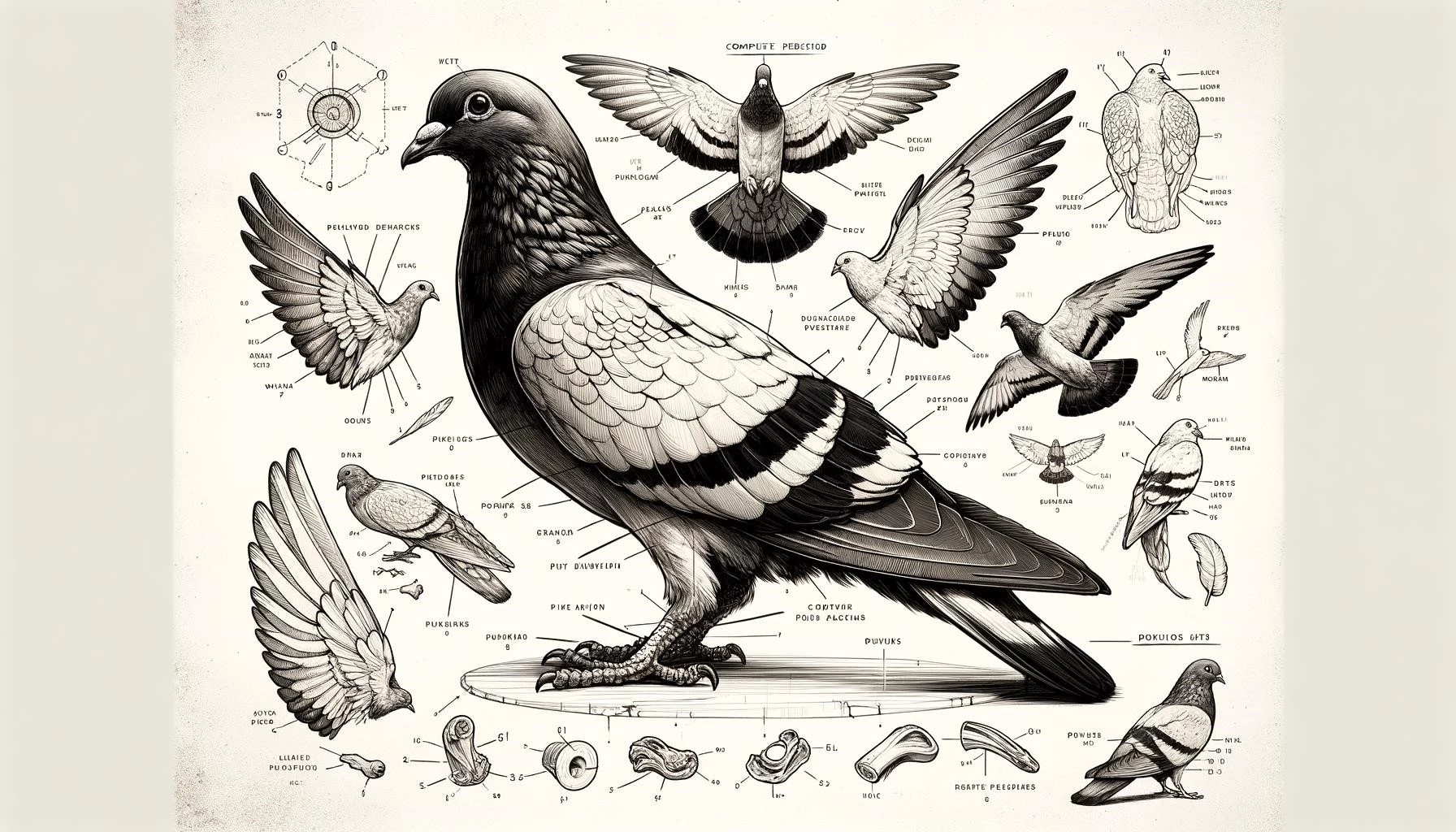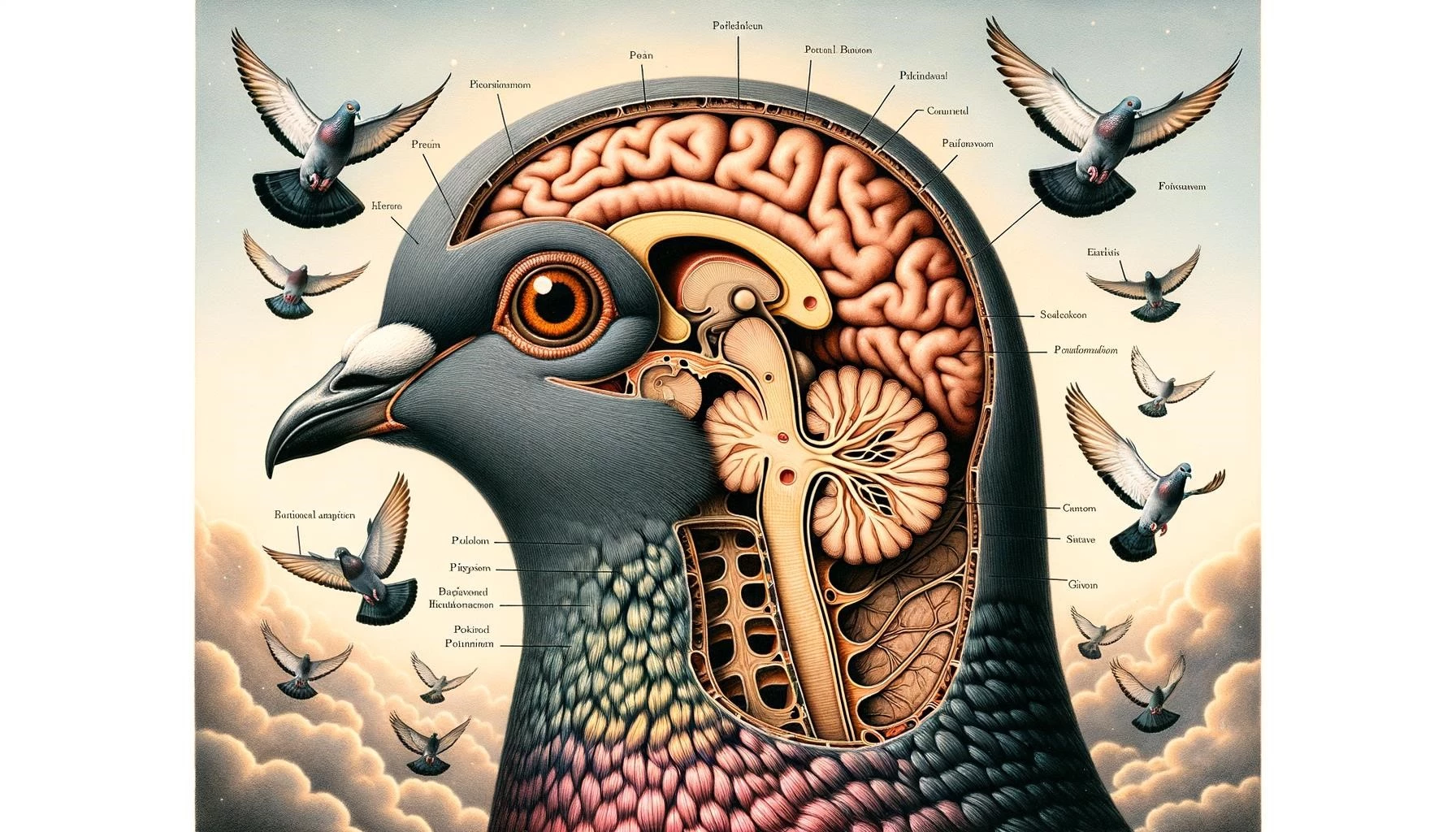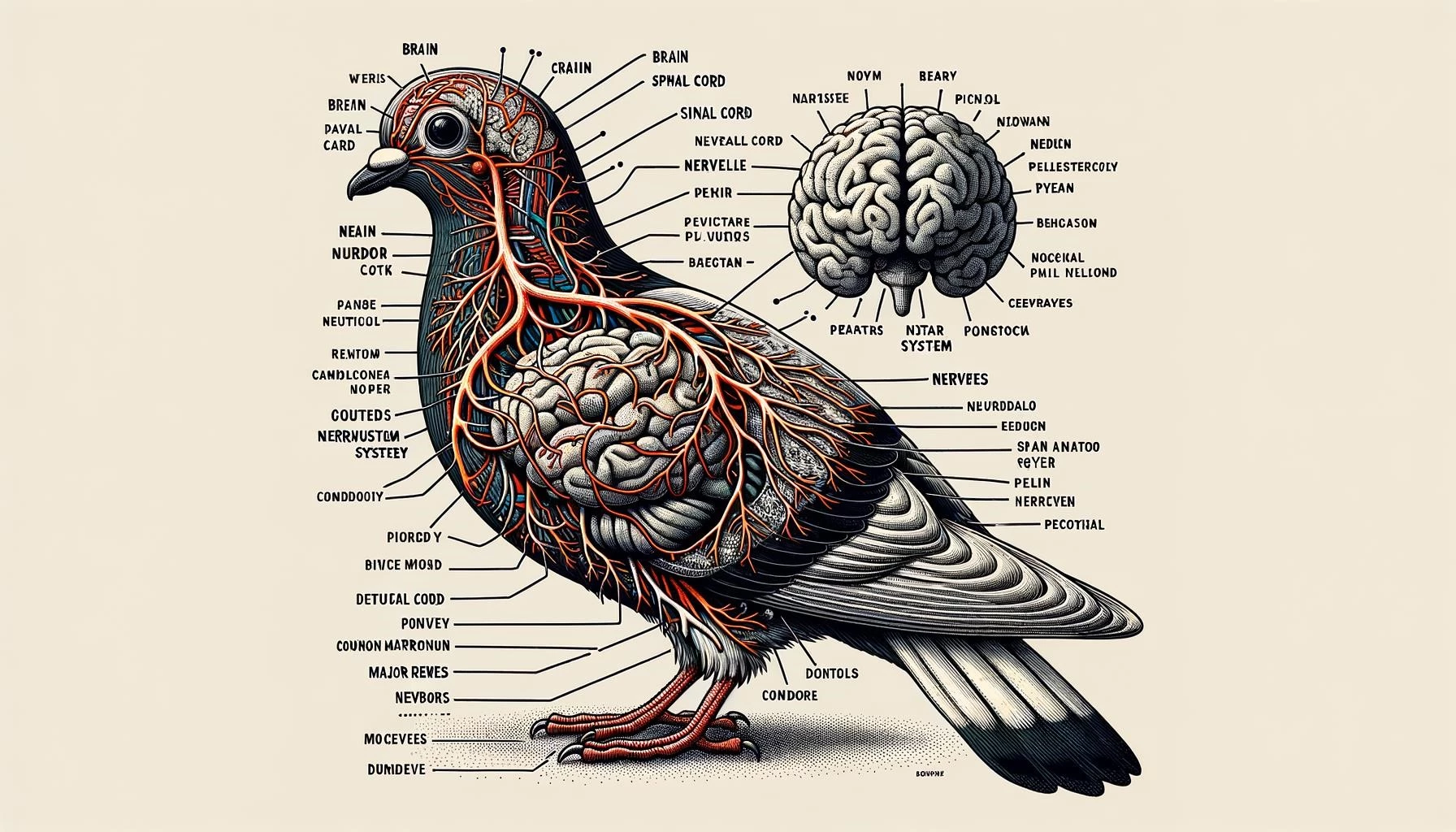Unraveling the intriguing world of pigeon anatomy opens up a realm of unique physiological adaptations, finely tuned to support their dietary needs and exceptional flight capabilities. This exploration sheds light on their distinctive respiratory and digestive systems, and the pivotal role these play in their survival and lifestyle. For veterinarians, a deep understanding of these nuances can pave the way for superior diagnostic and treatment strategies, ensuring the wellbeing of these remarkable avian creatures.
Key Takeaways
- Pigeons have a unique anatomy that allows them to excel in flight.
- The pigeon’s respiratory system includes nares, a larynx, bronchi, syrinx, and lungs.
- The digestive system of pigeons consists of the mouth, esophagus, crop, proventriculus, ventriculus, duodenum, jejunum, ileum, rectum, and cloaca.
Morphology and Unique Characteristics
Pigeons are known for their strong flight abilities and have certain anatomical adaptations that enable them to excel in this area. The keel, or carina, of the sternum is relatively long, allowing for the insertion of prominent flight muscles. This facilitates powerful wing movements during flight. Additionally, pigeons and doves possess a large, well-developed, bilobed crop. During the first week of life, pigeons and doves exclusively feed their chicks crop milk, which is a secretion produced by the parents in the crop.
Respiratory System
The respiratory system of pigeons consists of several key structures. These include the nares (nostrils) through which air enters, the larynx, bronchi, syrinx (voice box), and lungs. One unique characteristic of birds is that they do not have a diaphragm. This means that the abdomen communicates directly with the thorax, including the lungs, heart, and air sacs. Pigeons also have a varying number of pneumatic bones, which are air-filled and communicate with both the abdomen and thorax.
Digestive System
The digestive system of pigeons is adapted to their dietary needs. It consists of several organs, including the mouth, esophagus, crop, proventriculus, ventriculus (gizzard), duodenum, jejunum, ileum, rectum, and cloaca. Pigeons are granivores, primarily consuming seeds, and their digestive system allows for efficient processing of this type of food. The crop is a specialized organ that stores and softens food before it moves to the proventriculus, where enzymatic digestion begins. The ventriculus, or gizzard, is muscular and contains small stones or grit that help grind down food. The small intestines (duodenum, jejunum, and ileum) are responsible for nutrient absorption, while the rectum and cloaca facilitate waste elimination.
With a thorough understanding of pigeon anatomy, veterinarians can better diagnose and treat any potential health issues that may arise in these birds. By considering the unique characteristics of pigeons and their physiological adaptations, veterinarians can provide optimal care for these unique avian patients.









